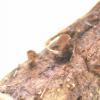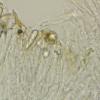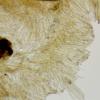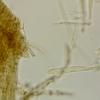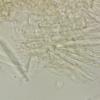
10-09-2025 23:53
 Marcel Heyligen
Marcel Heyligen
Found on Robinia pseudoacasia together with Diapor

10-09-2025 17:18
 Blasco Rafael
Blasco Rafael
Hola, encontre este estiercol de vaca estos apotec

03-09-2025 21:59
Philippe PELLICIERLa Léchère, Col de la Madeleine, alt 1970m, au s

07-09-2025 11:34
 Zuzana Sochorová (Egertová)
Zuzana Sochorová (Egertová)
Hello,I have identified this fungus as Hymenoscyph

02-09-2025 11:34
Thomas Læssøehttps://svampe.databasen.org/observations/10527903

05-09-2025 09:32
 Nicolas VAN VOOREN
Nicolas VAN VOOREN
Bonjour, hi everyone,Do you know where the fungari

I have what I believe to be a Colopila species on account of the prominent, septate paraphyses.
Fbs: c0.5mm. Stipitate, hairy, whitish, strongly strongly discolouring dark red-brown.
Paraphyses: lanceolate, broad, septate.
Asci: 45-55x5-6.
Spores: 9-13x2-3
Hairs: septate, congealed with yellow-brown matter.
On small fallen twigs of Myrica gale.

Oui Charles,
The paraphyses are typical of the genus Colipila . The only one species I have met is C. masduguana with such spores. The substrate Myrica gale is not usual.
Amitiés
Michel

Hi Michel,
Posted this twice by mistake, just getting used to using AscoFrance!
I thought it was worth posting owing to the unusual paraphyses. The specimens discoloured very strongly red-brown-perhaps they are somewhat different from the usual race. What is the usual substrate and how frequent is the fungus? My finds were both from wet heathland. When I went on the Fungal Records Database I couldn't find Colopila although I'm aware of one other British record.
Regards,
Charles.



